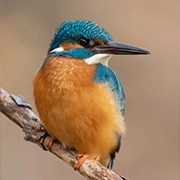Happy News for Giraffes!

The latest research on giraffes reveals positive developments in their population across Africa, bringing hopeful news to Lykkers interested in wildlife and nature preservation.
Despite numerous challenges faced in recent years, the number of giraffes in the wild has increased significantly, reflecting the effectiveness of ongoing efforts to protect these iconic animals.
This overview presents the current status, distribution, and conservation outlook for giraffes based on recent comprehensive studies.
Overview of Giraffe Population Trends
Current Population Estimates
Recent assessments estimate that over 117,000 giraffes roam the African landscape today. This figure marks a nearly 20% rise since 2015, when the population was estimated to be around 97,500 individuals.
Although this number is still relatively low compared to other large wildlife species, the upward trend offers a much-needed reason for optimism.
Comparative Context
To put this into perspective, there are approximately three to four times more elephants than giraffes across Africa. Despite giraffes remaining vulnerable in many regions, the increase in their numbers shows progress and demonstrates that targeted conservation actions can yield tangible results.
Challenges Impacting Giraffe Habitats
Habitat Threats
Giraffe habitats continue to face significant pressures from human activities, such as land development and agricultural expansion. These factors reduce the natural areas available for giraffes to thrive, contributing to their precarious status in the wild.
Conservation Status
As of 2016, giraffes were classified as "vulnerable" by a major international conservation organization due to these ongoing threats. This assessment was supported by detailed studies conducted by specialized groups focusing on giraffe and related species, emphasizing the need for sustained and adaptive conservation measures.
Improved Monitoring and Population Assessments
Enhanced Counting Techniques
One of the key reasons for the observed increase in giraffe numbers is the adoption of more accurate and effective monitoring methods. By refining how giraffes are counted in the wild, researchers have been able to detect population growth that might have previously gone unnoticed.
Scientific Collaboration
These advancements stem from collaborations between several organizations dedicated to giraffe conservation. Experts combine data collected across different African regions to build a clearer, continent-wide picture of giraffe abundance and distribution.
Taxonomic Advances and Their Conservation Implications
Recognition of Multiple Species
Recent scientific developments have redefined giraffes into four distinct species rather than a single one. This new classification allows for a better understanding of the unique conservation needs of each group, as they face different environmental pressures and threats.
Targeted Conservation Strategies
With species-specific data, conservationists can develop tailored protection plans that address the specific challenges encountered by each giraffe species. This approach increases the effectiveness of efforts and improves the chances of long-term survival for all giraffe groups.
Ongoing Research and Future Outlook
Continuous Data Collection
Research teams across Africa are actively gathering updated information on giraffe diversity, locations, and population dynamics. This ongoing work ensures that conservation strategies remain informed and responsive to changing conditions.
Positive Population Trends
The most recent review reveals growth in all four giraffe species, highlighting the success of current initiatives. For the first time in recent history, such positive trends have been documented at a continental level, signaling hope for the future.

In Conclusion
The increase in giraffe populations across Africa is a hopeful sign of progress for conservation efforts. Improved monitoring, taxonomic clarity, and international cooperation have all played vital roles in this achievement.
Although many challenges persist, these encouraging trends demonstrate that dedicated actions can lead to meaningful improvements. Continued support and innovation in protecting giraffes and their environments will be essential to maintaining this momentum and ensuring the well-being of these remarkable animals for generations to come.

 · Animal Team
· Animal Team